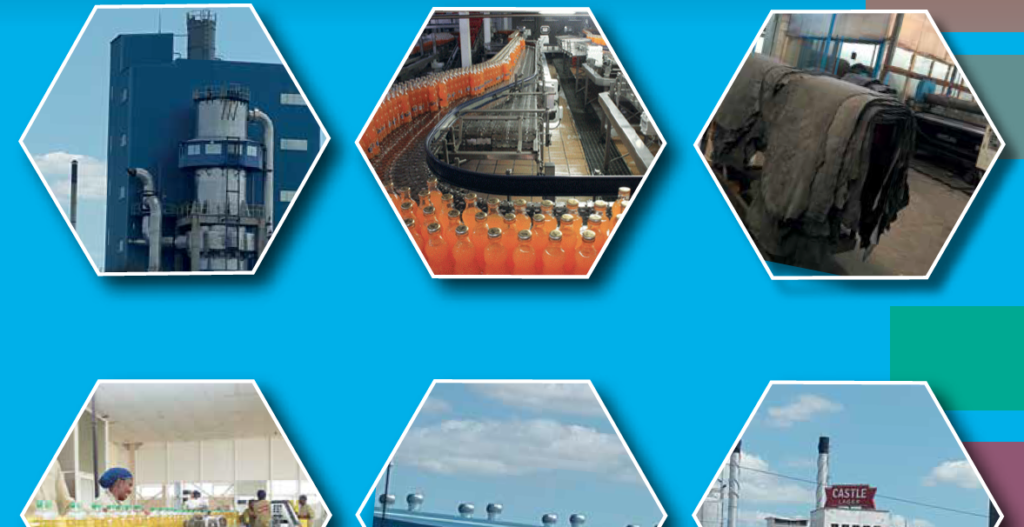
A blueprint cobbled to grow the manufacturing sector by at least 2% per annum failed to attain the target due to macroeconomic instability, a draft framework for its successor policy shows.
The government launched the Zimbabwe National Industrial Development Policy (ZNIDP) 1 to grow the manufacturing sector.
The failure to meet the growth target comes as the Confederation of Zimbabwe Industries (CZI), in collaboration with the Ministry of Industry and Commerce, the authors of ZNIDP, have begun calling for consultative workshops to formulate ZNIDP 2, which will cover the period 2026 to 2030.
The consultative workshops begin today in Bulawayo, to be followed by Harare (Wednesday) and Mutare on Friday.
The formulation of ZNIDP 2 comes as the manufacturing sector’s contribution to the economy has shrunk to 9%, from a peak of 23%, according to statistics from CZI.
“This industrial policy consolidates the gains from the previous policies, which were also aimed at enhancing industrialisation. The Zimbabwe National Industrial Development Policy 1 (ZNIDP 1) (2019-2023), outlined initiatives to restore the manufacturing sector and set it on a growth path, enabling it to play a catalytic and transformative role in the economy,” the draft ZNIDP 2 framework read.
“It was formulated as a follow-up to the Industrial Development Policy (2012-2016). Among the objectives of the ZNIDP 1 were: Manufacturing sector growth rate of at least 2% per annum; Manufacturing value added growth of 16% per annum; Merchandise export growth rate of 10% per annum to orient the manufacturing sector towards exports; and increasing the manufacturing sector share of employment to 20% by 2023.
“Due to the various challenges, including macroeconomic instability, these objectives were largely not realised.”
- LBQ community clamours for enabling environment
- Community trailblazers: Chipo Gozho: An inspiration to today’s women
- Mthuli Ncube abandons struggling consumers
- AWF empowers victims of human-wildlife conflict
Keep Reading
The various challenges include policy inconsistency, exchange rate volatility, low liquidity, declining infrastructure and poor utility service delivery.
The framework revealed that the Zimbabwe Industrial Reconstruction and Growth Plan (ZIRGP) (2024-2025) was then rolled out to align the industrial policy to the National Development Strategy (NDS) 2 (2026-2030).
“Thus, ZIRGP aimed to address immediate challenges faced by the manufacturing and commercial sectors while laying a strong foundation for accelerated industrial growth under ZNIDP 2, towards attaining Vision 2030 aspirations,” the draft ZNIDP 2 framework said.
The ZIRGP was mainly focused on strengthening value chains and import substitution, rural industrialisation, implementation of the local content strategy, promoting SME linkages and financing for manufacturing.
The ZIRGP also focused on promoting manufacturing, identifying idle manufacturing infrastructure assets, and informalisation.
Finally, the ZIRGP focused on smuggling and counterfeit products, improving the ease of doing business and reducing the cost of doing business, and enhancing collaboration between the government and the private sector.
These efforts were cognisant of developments in bilateral and multilateral engagements such as the African Continental Free Trade Area, Sadc, and the Common Market for Eastern and Southern Africa.
“This policy (ZNIDP 2) aims to promote a sustainable and diversified industrial growth, enhance productivity and drive structural transformation and competitiveness by accelerating investment in Zimbabwe’s industrial sector,” the draft ZNIDP 2 framework read.
Its specific objectives are to attain a manufacturing growth rate from the current annual average of 1,6% per annum over the past four years to an annual average of at least 5% per annum over the plan period. It seeks to increase the share of the manufacturing sector in GDP from the current average of 16,1% to an average of 20% over the plan period. The policy seeks to increase manufactured exports from the current average of 7,5% per annum to an average of 10% over the plan period;
It seeks to increase the contribution of manufacturing to total employment from the current average of 8,3% to an average of 12% over the plan period; to increase capacity utilisation from the current five-year annual average of 51% to an average of 60% over the plan period.
The formulation of this policy comes at a time when the Treasury is formulating the NDS 2.










